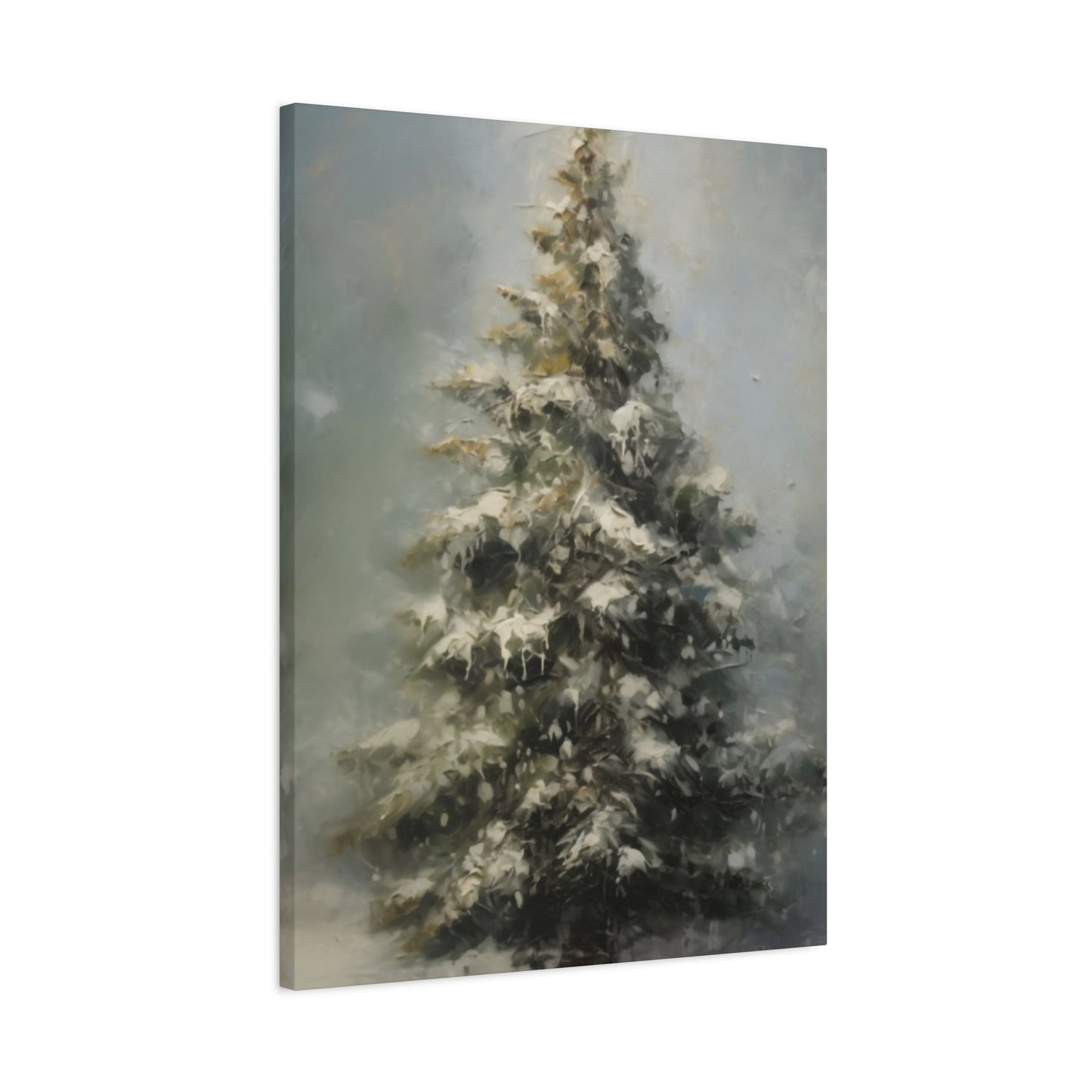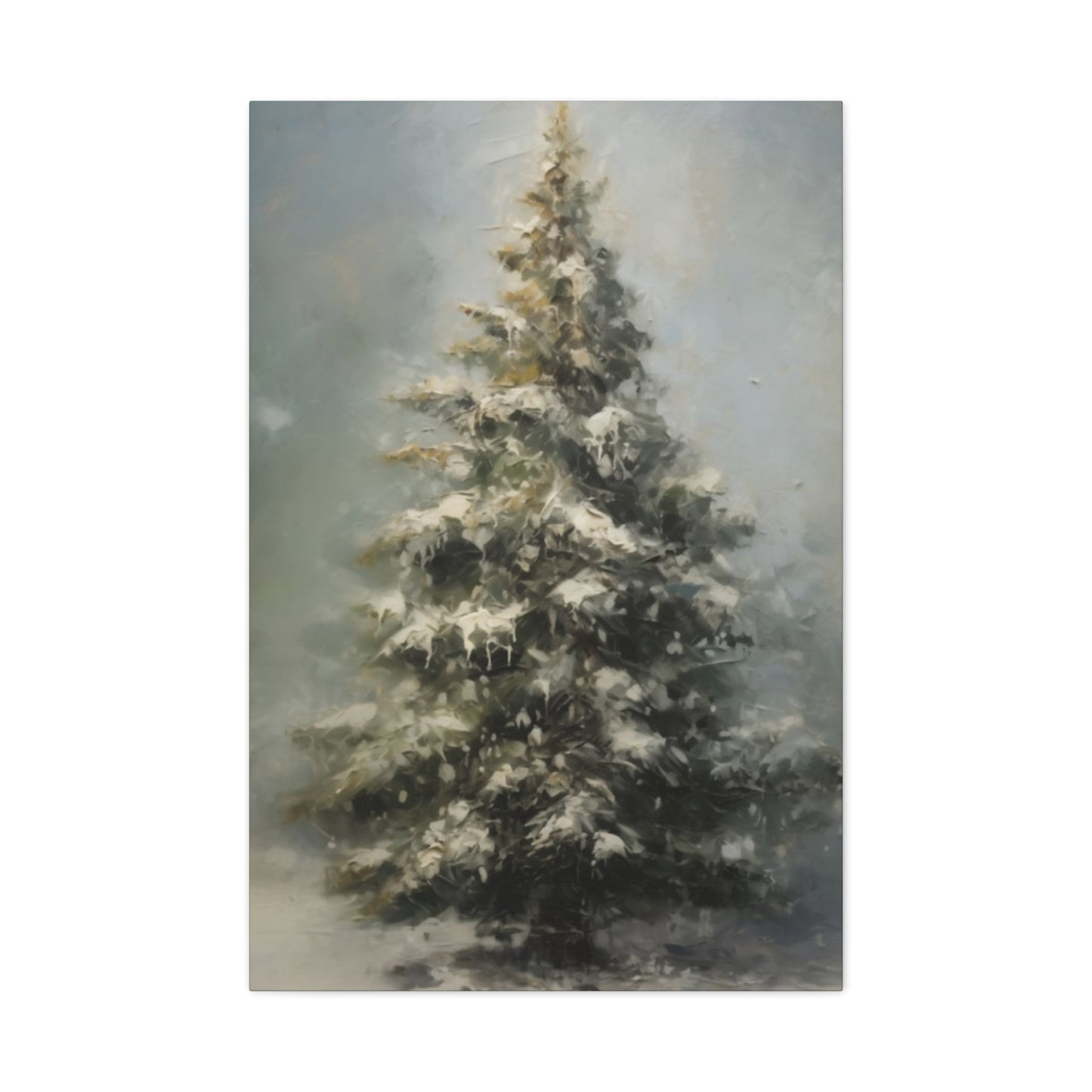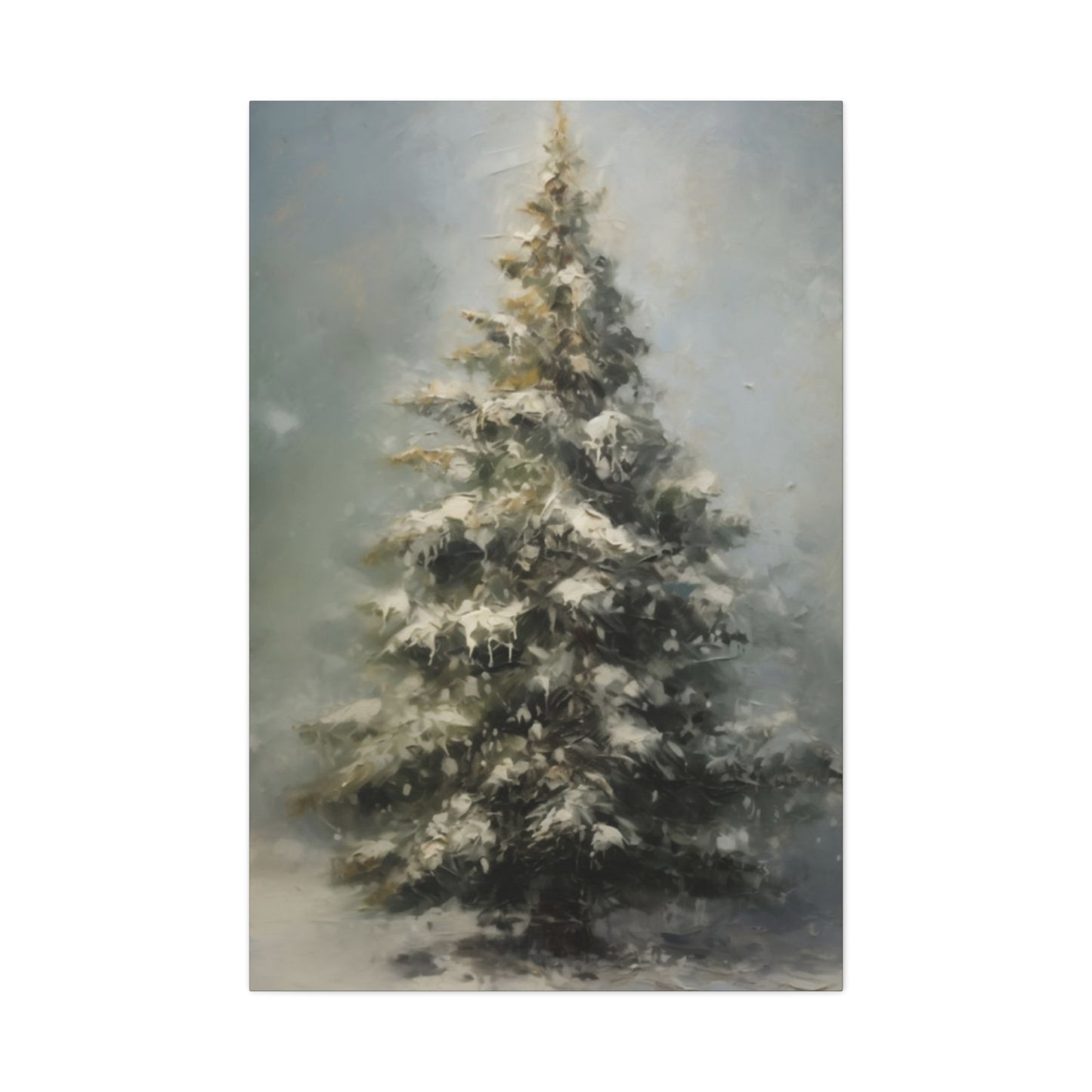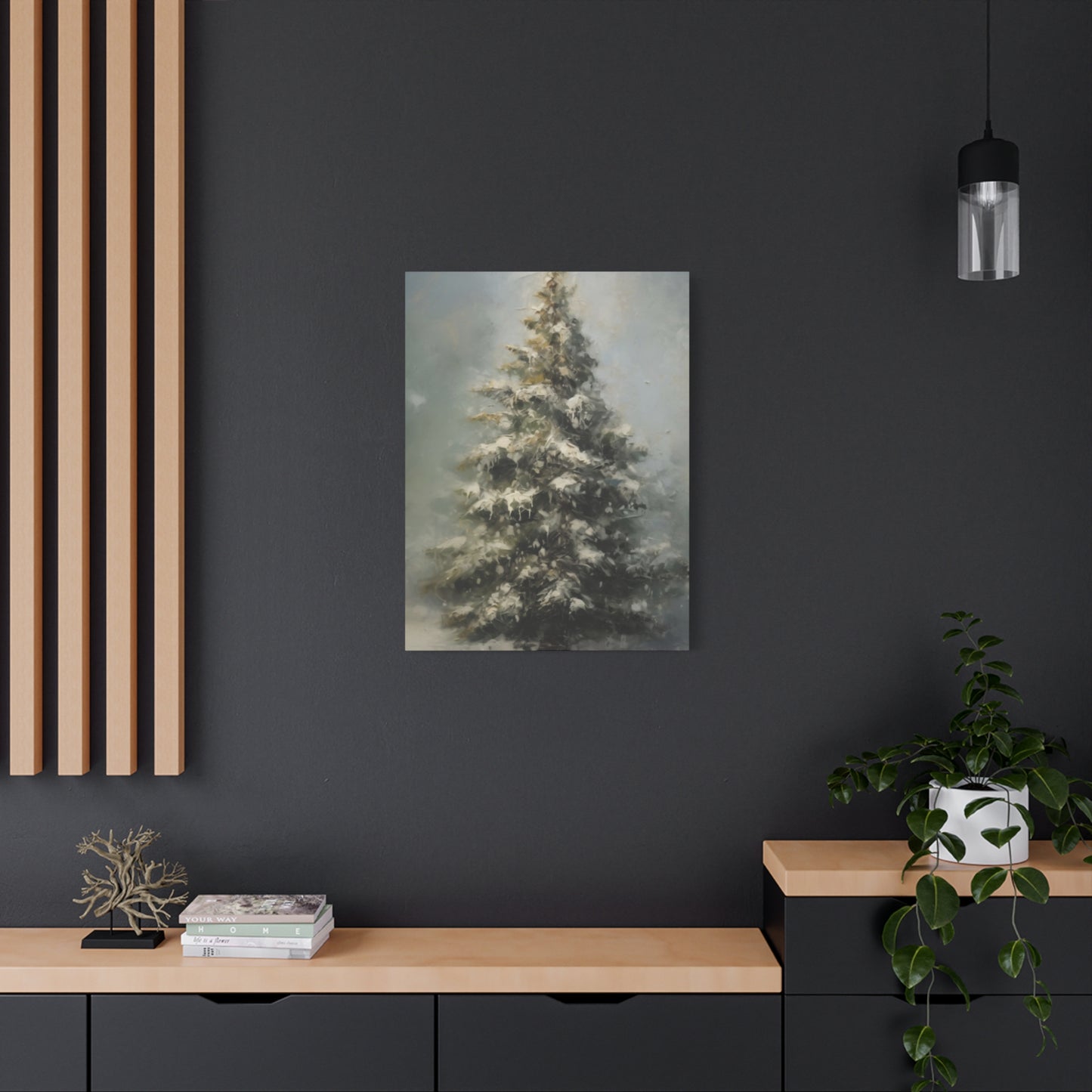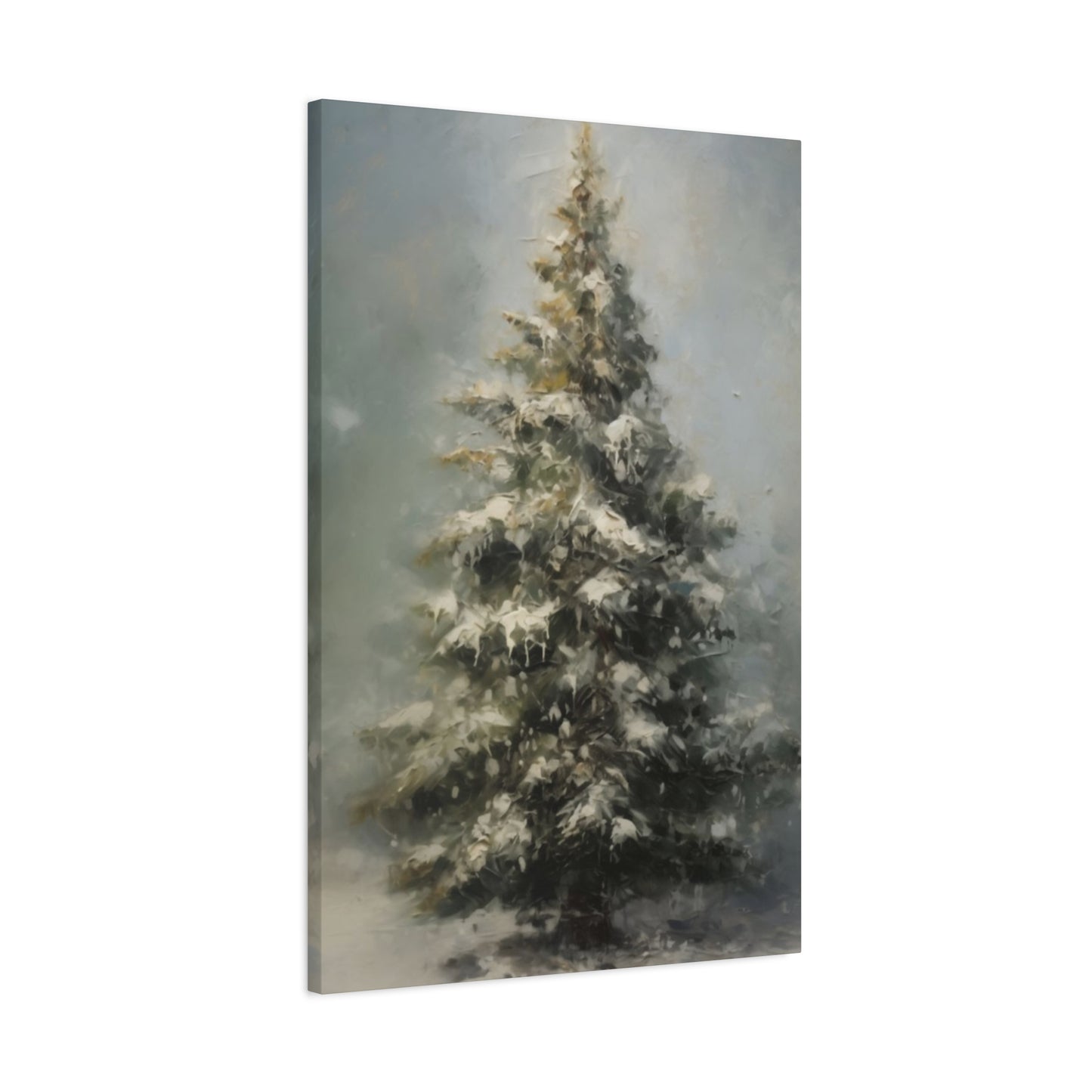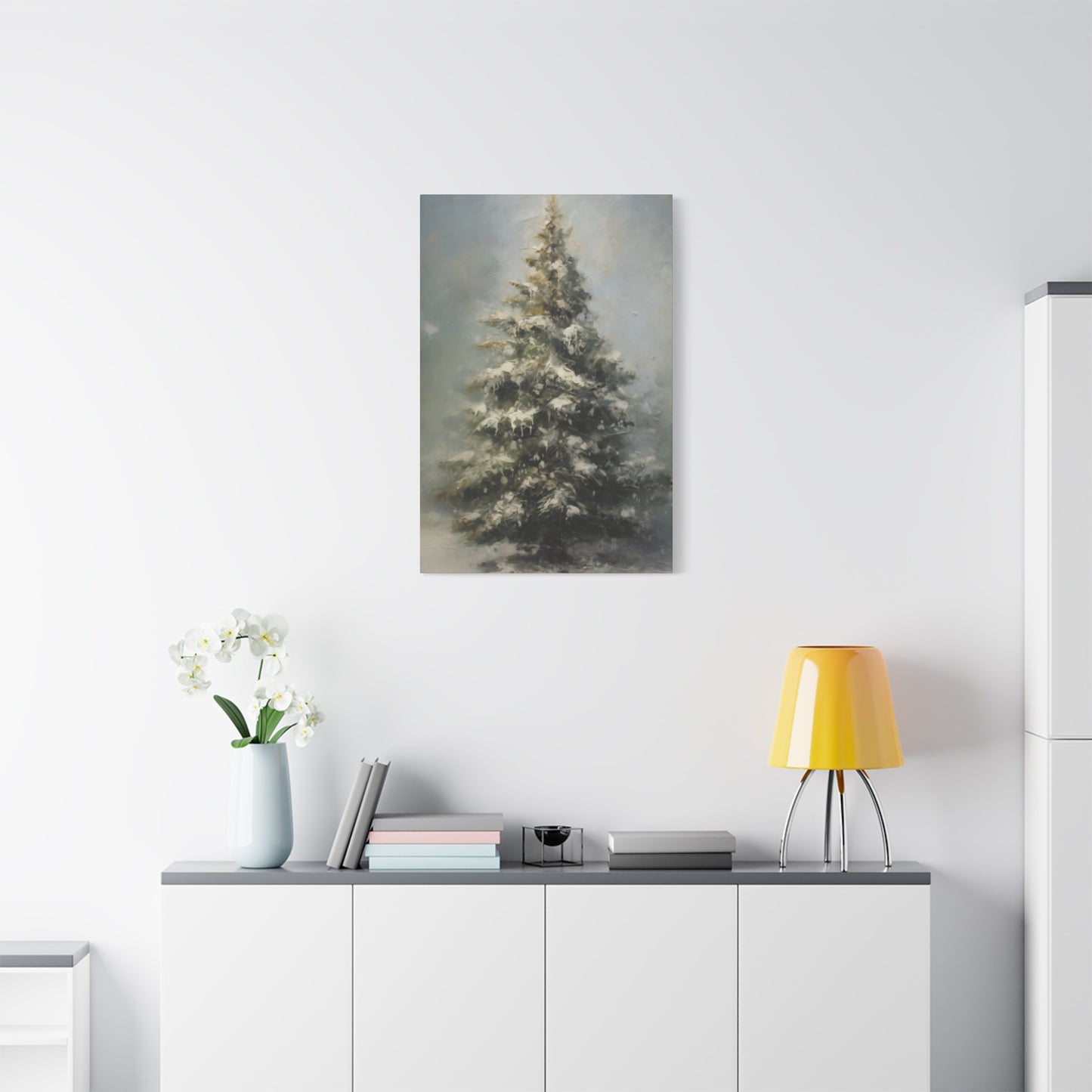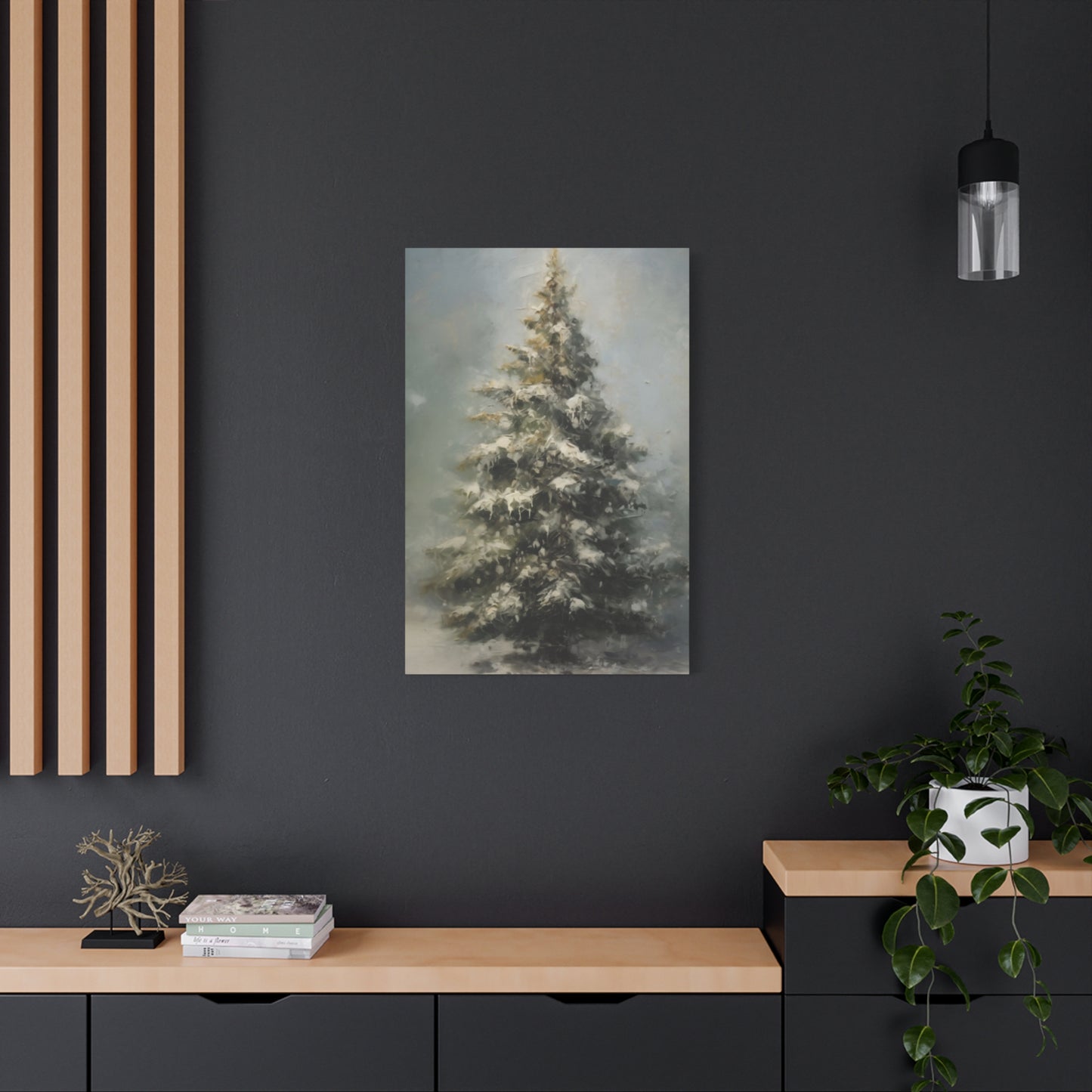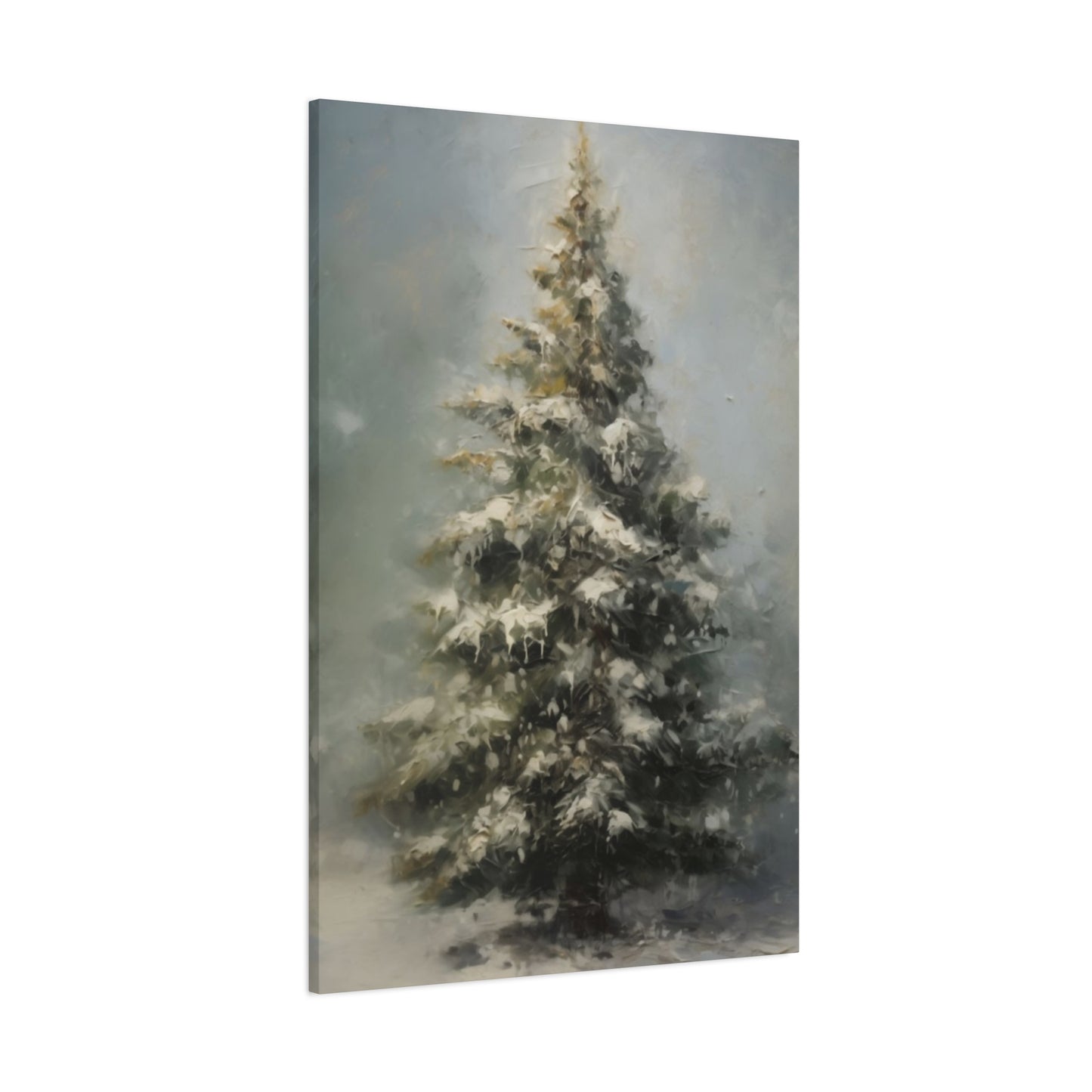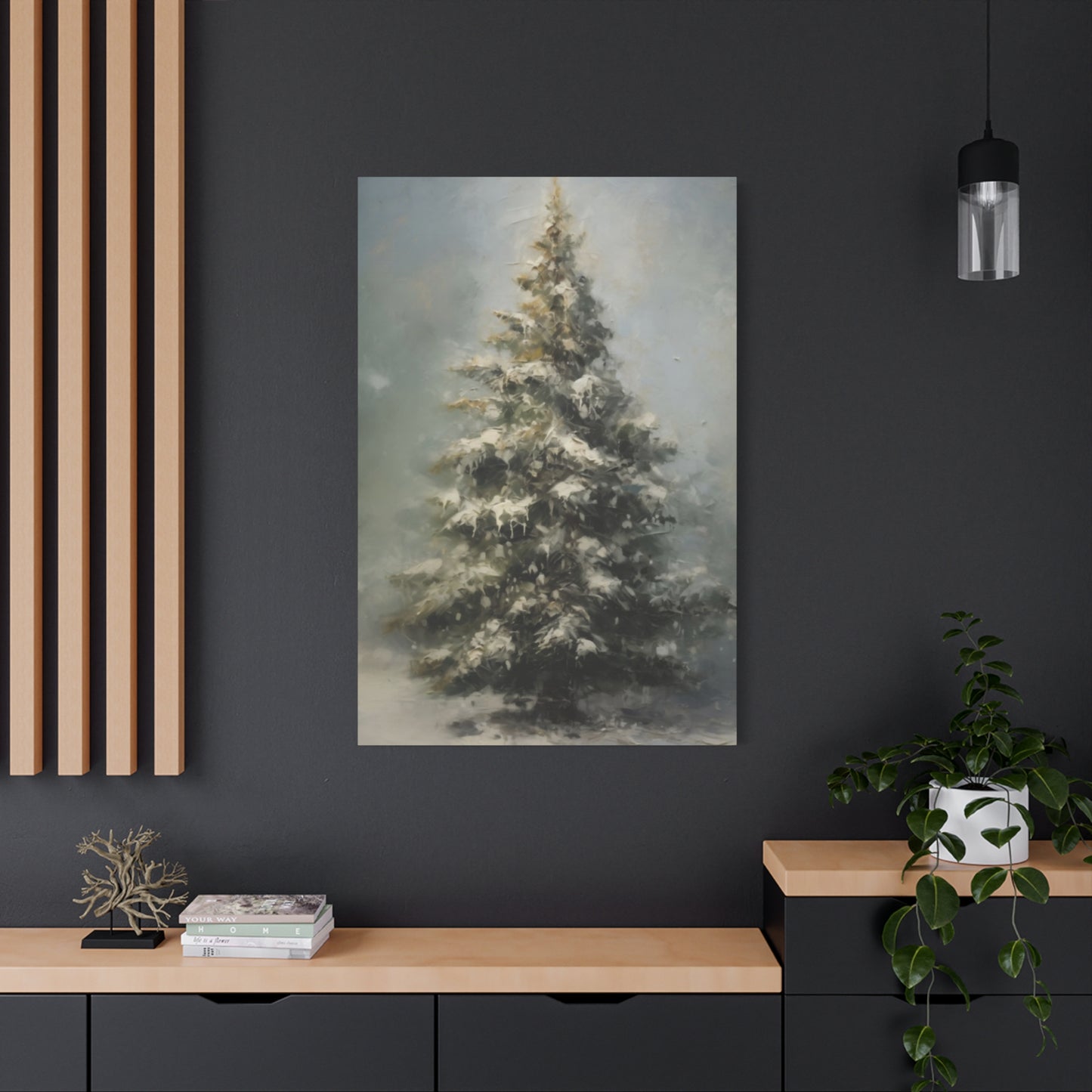Snowy Christmas Tree Wall Art: Transform Your Home with Winter Wonderland Elegance
The enchanting beauty of winter landscapes has captivated human imagination for centuries, and nowhere is this more evident than in the timeless appeal of snowy Christmas tree wall art. These magnificent pieces bring the serene majesty of frost-kissed forests and snow-laden pines directly into your living space, creating an atmosphere of peaceful elegance that resonates throughout the holiday season and beyond. Whether you're seeking to establish a cozy winter retreat or looking to infuse your home with the magical essence of a pristine winter wonderland, snowy tree-themed wall art offers an unparalleled opportunity to transform ordinary walls into captivating focal points that speak to the soul.
The popularity of winter-themed artwork has surged dramatically in recent years, as homeowners and interior designers alike recognize the profound impact that carefully selected wall décor can have on the ambiance and aesthetic appeal of any room. Snowy Christmas tree art, in particular, holds a special place in the hearts of those who cherish the holiday season, offering a visual reminder of the peace, joy, and natural beauty that winter brings. From contemporary minimalist designs featuring solitary evergreens against stark white backgrounds to elaborate panoramic scenes showcasing entire forests blanketed in pristine snow, the variety of available styles ensures that every taste and interior design preference can be accommodated.
The Timeless Appeal of Winter Forest Imagery
Winter forest imagery possesses an inherent tranquility that few other artistic subjects can match. The depiction of snow-covered trees, particularly Christmas evergreens, evokes feelings of calm serenity and nostalgic warmth that resonate deeply with viewers. This emotional connection stems from our collective memories of winter holidays, family gatherings, and the simple pleasure of witnessing nature's transformation during the coldest months of the year. When you incorporate snowy tree wall art into your home, you're not merely adding a decorative element; you're inviting the essence of winter's quiet beauty to become part of your daily experience.
The artistic representation of frosted pines and snow-laden branches has evolved significantly over the years, with contemporary artists employing a wide range of techniques to capture the delicate interplay of light, shadow, and texture that makes winter landscapes so visually compelling. High-quality canvas prints now reproduce these scenes with remarkable fidelity, preserving every subtle gradation of color from the deep greens of evergreen needles to the brilliant whites and soft blues of freshly fallen snow. The attention to detail in modern printing technology ensures that each piece maintains its visual impact whether viewed from across the room or examined closely, making these artworks suitable for spaces of any size.
Creating Holiday Ambiance Through Wall Décor
The power of wall art to establish and enhance the ambiance of a space cannot be overstated, and during the holiday season, this effect becomes even more pronounced. Snowy Christmas tree wall décor serves as an instant mood setter, transforming rooms into festive sanctuaries that celebrate the spirit of the season. Unlike traditional holiday decorations that must be stored away after the festivities conclude, tastefully chosen winter tree art can remain displayed year-round, providing ongoing enjoyment and serving as a permanent reminder of the peace and beauty associated with winter landscapes.
When selecting pieces for your home, consider how the artwork will interact with your existing décor and color scheme. Snow-covered tree paintings typically feature a palette dominated by whites, blues, greens, and earth tones, making them remarkably versatile and compatible with a wide range of interior design styles. These colors naturally complement both warm and cool color schemes, and the neutral base provided by white snow allows the artwork to integrate seamlessly into spaces decorated in virtually any style, from rustic farmhouse to sleek contemporary. The adaptability of winter tree art makes it an excellent investment for homeowners who appreciate versatility in their decorative choices.
Exploring Various Artistic Styles and Interpretations
The world of snowy Christmas tree wall art encompasses an impressive diversity of artistic styles, each offering its own unique perspective on winter's beauty. Traditional realistic paintings capture every intricate detail of frost-covered branches and snow-laden boughs with meticulous precision, appealing to those who appreciate classical artistic techniques and naturalistic representation. These pieces often feature rich, layered compositions that reward careful observation, revealing new details with each viewing and providing lasting visual interest that endures far beyond initial impressions.
Contemporary interpretations of winter tree scenes embrace abstraction, minimalism, and modern design principles to create artwork that feels fresh and current while still honoring the timeless appeal of the subject matter. Minimalist snowy tree canvas prints, for instance, might reduce the scene to its essential elements, presenting a single evergreen silhouette against a pristine white background. This pared-down approach creates a sense of zen-like simplicity that complements modern interiors beautifully while still conveying the peaceful essence of a winter landscape. The clean lines and uncluttered composition of minimalist winter art make it particularly well-suited for spaces where visual calm and order are priorities.
Impressionistic renderings of snowy forests offer yet another aesthetic option, using loose brushstrokes and atmospheric color blending to suggest rather than explicitly depict the winter scene. These pieces often emphasize the play of light through tree branches and the subtle color variations within seemingly monochromatic snow, creating artwork that feels alive and dynamic despite the static nature of the medium. The impressionistic style brings a sense of movement and vitality to winter scenes, capturing the ephemeral quality of falling snow and the way sunlight filters through frost-covered branches to create magical patterns on the forest floor.
The Psychological Benefits of Nature-Inspired Art
Scientific research consistently demonstrates that exposure to nature imagery, even in reproduced form, provides measurable psychological and emotional benefits. Snowy forest Christmas canvas paintings tap into this phenomenon by bringing elements of the natural world into indoor spaces where direct contact with nature may be limited. Studies have shown that viewing scenes of natural landscapes can reduce stress levels, lower blood pressure, and promote feelings of relaxation and wellbeing. During the often hectic holiday season, having peaceful winter tree art as a focal point in your home can serve as a visual refuge, offering a moment of calm amidst the bustle of festivities and preparations.
The specific imagery of snow-covered evergreens carries additional psychological associations beyond those generated by nature scenes in general. Evergreen trees have long symbolized endurance, eternal life, and hope, making them particularly meaningful during winter months when much of nature appears dormant. The presence of snow adds layers of meaning related to purity, peace, and new beginnings. When these symbolic elements combine in well-executed wall art, they create pieces that resonate on both conscious and subconscious levels, enriching your environment in ways that extend far beyond mere visual appeal. The cumulative effect of living with such imagery can contribute to a more positive, centered emotional state throughout the winter season.
Choosing the Perfect Size and Placement
Selecting the appropriate size for your snowy Christmas tree wall art requires careful consideration of the space where it will be displayed. Large statement pieces measuring four feet or more in width create dramatic focal points that anchor entire rooms, making them ideal for prominent walls in living rooms, dining areas, or entryways where they can be appreciated by both residents and guests. These oversized artworks command attention and set the tone for the entire space, establishing the winter wonderland theme immediately upon entry. When working with large-scale pieces, ensure adequate viewing distance exists so that the full composition can be appreciated without overwhelming the space or requiring viewers to stand uncomfortably close to the wall.
Medium-sized pieces offer versatility and can be used individually or arranged in groupings to create custom gallery walls. A collection of coordinated winter tree prints in various sizes allows for creative arrangement possibilities that add visual interest through variation in scale while maintaining thematic cohesion. This approach works particularly well in hallways, staircases, and bedroom walls where multiple smaller pieces can be arranged to guide the eye along an architectural feature or fill a large wall section without the expense of a single oversized artwork. Consider mixing different perspectives and compositions within your grouping, perhaps combining close-up views of frost-covered branches with wider landscape scenes for dynamic visual contrast.
Smaller accent pieces serve important roles in intimate spaces like powder rooms, home offices, or reading nooks where a subtle touch of winter imagery enhances the atmosphere without overwhelming the limited wall space. These compact artworks can also be incorporated into existing gallery walls alongside other subjects, providing seasonal variation that ties into your broader holiday decorating scheme. When placing smaller pieces, consider positioning them at eye level for optimal viewing, adjusting the height based on whether they'll typically be viewed while standing or seated. Proper placement ensures that even modestly sized artworks make their full impact on the space.
Material Considerations for Long-Lasting Beauty
The material and construction quality of your wall art significantly impact both its appearance and longevity. Canvas prints remain among the most popular choices for snowy tree artwork due to their classic appearance, texture that adds depth to the image, and relatively lightweight nature that simplifies hanging. High-quality canvas prints feature gallery-wrapped construction where the image extends around the edges of the stretcher bars, eliminating the need for framing and creating a finished, contemporary look that works well in modern interiors. The slight texture inherent in canvas material adds dimensionality to the printed image, enhancing the sense of depth and making snow appear more tactile and realistic.
Premium canvas prints utilize archival-quality inks and UV-protective coatings that resist fading even when exposed to indirect sunlight, ensuring that your investment maintains its visual impact for years to come. When evaluating canvas options, inquire about the weight of the canvas material itself, as heavier weights typically indicate superior quality and durability. The stretcher bars should be constructed from kiln-dried wood that resists warping, and the canvas should be stretched taut without any sagging or loose areas that would detract from the image quality. These construction details may not be immediately visible, but they profoundly affect the longevity and appearance of the finished piece.
Framed prints offer traditional elegance and allow for customization through frame selection that coordinates with your existing décor. A white or light-colored frame can enhance the wintery feel of snowy tree art while helping it blend seamlessly with surrounding walls, while natural wood frames add warmth and create connections to the organic subject matter depicted in the artwork. Dark frames provide dramatic contrast that makes the snow appear even brighter and more luminous, creating a bold visual statement that draws the eye immediately. The glass or acrylic glazing used in framed prints adds an extra layer of protection against environmental factors while potentially reducing glare depending on the finish selected.
Integrating Lighting for Maximum Impact
Proper lighting can dramatically enhance the visual impact of your snowy Christmas tree wall art, transforming a beautiful piece into a truly spectacular focal point. Picture lights mounted above the artwork provide focused illumination that highlights the details and colors within the piece while creating an elegant, gallery-like presentation. These specialized fixtures come in various styles from traditional brass to sleek modern designs, allowing you to select options that complement both the artwork and the surrounding décor. Adjustable picture lights offer the flexibility to direct light precisely where it's most effective, ensuring even illumination across the entire surface of the artwork.
Track lighting systems provide versatile illumination options that can be adjusted to accommodate multiple artworks or reconfigured as your decorative preferences evolve. When positioning track lights to illuminate winter tree art, aim for a 30-degree angle from the wall to minimize glare while providing adequate brightness to showcase the full range of colors and details in the piece. This angled approach prevents the harsh reflections that can occur with direct perpendicular lighting while still delivering ample illumination to make the artwork visible and engaging even in dimly lit rooms. Dimmable track systems offer the ultimate in flexibility, allowing you to adjust the intensity of illumination based on time of day, activity in the room, or desired ambiance.
Natural lighting considerations also play a crucial role in artwork placement and presentation. While some exposure to natural light can enhance the appearance of snowy tree art by creating dynamic changes in appearance throughout the day, prolonged direct sunlight exposure can cause fading and deterioration even in pieces treated with UV-protective coatings. Position artwork where it will receive indirect natural light rather than direct sun exposure, particularly during peak intensity hours. If a sunny wall location is unavoidable, consider using window treatments that filter and diffuse incoming light, protecting your artwork while still allowing you to benefit from natural illumination. The interplay between natural and artificial lighting creates opportunities for your winter tree art to reveal different aspects of its beauty depending on the time of day and lighting conditions.
Seasonal Versatility and Year-Round Appeal
One of the most compelling advantages of snowy Christmas tree wall art is its capacity to transcend purely seasonal decorating while still celebrating winter's beauty. Unlike explicitly holiday-themed décor featuring Santa Claus, reindeer, or religious imagery, winter tree landscapes possess a neutral quality that makes them appropriate for display throughout the winter months and potentially year-round. The natural subject matter and peaceful atmosphere these pieces convey have universal appeal that extends beyond any specific holiday or celebration, making them sound investments that provide enjoyment far beyond the traditional Christmas season.
For those who prefer to embrace seasonal decorating changes, winter tree art serves as an excellent foundation that can be enhanced with additional holiday elements during festive periods. Surrounding your snowy tree canvas with evergreen garlands, twinkling lights, or seasonal accessories amplifies the holiday spirit without requiring you to change the artwork itself. When the holidays conclude and you remove the supplementary decorations, the winter tree art remains as a beautiful reminder of the season's tranquil beauty, carrying you through January, February, and beyond. This flexibility makes winter tree artwork particularly valuable for those who enjoy decorating for the holidays but prefer not to store and rotate large pieces of wall art.
The timeless nature of winter landscape imagery means that these pieces resist the stylistic obsolescence that affects more trend-driven décor. While specific color palettes and design movements fall in and out of favor, the enduring appeal of snow-covered trees and peaceful forest scenes remains constant across decades and design eras. This longevity makes winter tree art a wise investment that will continue to enhance your home's appearance for years to come, adapting gracefully to evolving decorating styles and complementing future renovations or redesigns. The classic nature of the subject matter ensures that your artwork will never appear dated or out of place, regardless of how interior design trends shift over time.
Color Palettes and Complementary Décor
The color palette of snowy Christmas tree wall art typically centers on cool tones including various shades of white, blue, and green, often accented with warm browns from tree trunks and branches. These colors create a naturally soothing atmosphere while offering numerous opportunities for coordination with surrounding décor elements. The predominance of white and light tones in winter tree art makes it particularly effective at brightening spaces and creating a sense of openness, especially valuable in smaller rooms or areas with limited natural light. The reflective quality suggested by snow imagery can make spaces feel larger and more airy, contributing to an overall sense of spaciousness and comfort.
When building a decorating scheme around winter tree artwork, consider incorporating textiles and accessories that echo the colors present in the piece. Soft throw blankets in ice blue or cream, pillows featuring silver or white patterns, and area rugs in complementary cool tones create cohesive visual connections that tie the room together. Natural materials like wood, stone, and fur or faux fur accents reinforce the organic connection to nature that winter tree art celebrates, creating layers of texture and interest that make the space feel intentionally designed rather than randomly assembled. These tactile elements add warmth that balances the cool color palette, preventing the space from feeling cold or unwelcoming despite the winter theme.
Metallic accents in silver, platinum, or white gold complement snowy tree art beautifully, reflecting light and adding subtle sparkle that echoes the glittering quality of sun on fresh snow. These metallic touches can be incorporated through picture frames, light fixtures, decorative objects, or furniture hardware, creating cohesive connections throughout the space. For those who prefer warmer metallic tones, copper and rose gold provide contrast against cool blues and whites while adding inviting warmth that prevents the winter theme from feeling too austere. The key is maintaining balance between cool and warm elements so that the space feels comfortable and inviting rather than stark or cold.
Creating Gallery Walls with Winter Themes
Gallery walls featuring multiple pieces of snowy Christmas tree art create dramatic visual impact while allowing for creative expression through varied arrangements. When planning a winter-themed gallery wall, start by selecting a collection of pieces that share common elements such as color palette, style, or subject matter while offering enough variation to create visual interest. Mixing different perspectives such as close-up detail shots of frost-covered needles with wider landscape views adds depth and dimension to the overall presentation. Including pieces of varying sizes creates dynamic rhythm that guides the eye through the arrangement while preventing the monotony that can result from uniform sizing.
Before committing to nail holes in your wall, experiment with arrangement options by creating templates from craft paper cut to match the dimensions of each piece. Tape these templates to the wall and live with the arrangement for a few days, making adjustments until you achieve a composition that feels balanced and visually satisfying. This preview process allows you to consider how the arrangement interacts with furniture placement, architectural features, and traffic patterns within the room. Pay attention to the spacing between pieces, typically maintaining 2-3 inches of separation to allow each artwork to maintain its individual identity while contributing to the cohesive whole.
The anchor piece method provides a reliable approach for creating successful gallery walls, beginning with the largest or most visually striking piece positioned at approximately eye level as the focal point. Additional pieces are then arranged around this anchor, creating a composition that feels organized rather than random. For a more casual, collected-over-time aesthetic, consider a salon-style arrangement with pieces hung edge to edge with minimal spacing, creating a dense tapestry of winter imagery. Alternatively, a grid layout with uniform spacing and alignment creates a more formal, gallery-like presentation that works particularly well with pieces of similar sizes or when showcasing a series of related works.
Incorporating Lighting Elements in Winter Tree Art
Many contemporary interpretations of snowy Christmas tree wall art incorporate illuminated elements that add an extra dimension of visual interest and ambiance. Artwork featuring LED backlighting creates a gentle glow that makes the piece visible and engaging even in dimly lit rooms, while fiber optic elements can simulate twinkling stars or the sparkle of sunlight on snow. These lit pieces blur the line between traditional wall art and decorative lighting, serving dual purposes that make them particularly valuable in spaces where both illumination and aesthetic appeal are priorities. The subtle light emitted by these pieces creates a warm, inviting atmosphere that enhances the cozy feeling associated with winter evenings.
When selecting illuminated winter tree art, pay attention to the quality and color temperature of the lighting elements. Warm white LEDs create an inviting, golden glow reminiscent of candlelight or sunset on snow, while cool white options emphasize the crisp, fresh quality of winter daylight. Some advanced pieces offer color-changing capabilities that allow you to adjust the lighting to suit your mood or occasion, transitioning from warm holiday golds to icy blues or vibrant aurora-inspired colors. These versatile pieces adapt to different settings and purposes, functioning as ambient lighting for entertaining, task lighting for reading areas, or night lights in bedrooms and hallways.
Battery-operated options provide installation flexibility by eliminating the need for proximity to electrical outlets, allowing you to position the artwork wherever it will have the greatest visual impact regardless of outlet location. Solar-powered pieces represent an eco-friendly alternative that reduces energy consumption while still providing the ambient glow that makes illuminated art so appealing. For those who prefer plug-in options, look for pieces with long, thin cords that can be easily concealed behind furniture or routed discreetly along baseboards to maintain a clean, uncluttered appearance. Timer functions allow you to automate when the lighting activates and deactivates, ensuring your artwork provides ambiance during key evening hours without requiring manual operation.
Commissioning Custom Winter Tree Artwork
For those seeking truly unique snowy Christmas tree wall art that perfectly matches their vision and space requirements, commissioning a custom piece from a talented artist offers unparalleled opportunities for personalization. Custom artwork allows you to specify exact dimensions, color schemes, composition details, and stylistic approaches, resulting in a one-of-a-kind creation that reflects your personal taste and coordinates flawlessly with your interior design. When working with an artist on a commission, clear communication about your expectations, preferences, and the intended setting for the artwork ensures a successful collaboration that yields results exceeding what could be achieved through ready-made options.
Begin the commission process by researching artists whose existing work demonstrates styles and techniques that appeal to you. Review portfolios carefully, paying attention to how different artists interpret winter landscapes and handle the technical challenges of depicting snow, ice, and winter light. Once you've identified potential artists, reach out to discuss your project, providing photographs of the space where the artwork will hang, samples of your existing décor, and any reference images that illustrate the mood or composition you envision. Professional artists appreciate this contextual information as it allows them to create work that integrates seamlessly into your space rather than existing in isolation.
Discussing timeline and budget expectations upfront prevents misunderstandings and ensures both parties enter the arrangement with aligned expectations. Custom artwork typically requires several weeks to months from initial consultation to final delivery, depending on the size and complexity of the piece as well as the artist's existing workload. Be prepared for the investment to exceed the cost of ready-made art, as you're paying for the artist's time, expertise, and the unique nature of a piece created specifically for you. Many artists work in stages, providing sketches or preliminary studies for approval before proceeding to the final piece, allowing you to provide feedback and ensure the direction aligns with your vision. This collaborative process often results in stronger final pieces and greater satisfaction for collectors.
Caring for Your Winter Tree Wall Art
Proper care and maintenance ensure that your snowy Christmas tree wall art retains its beauty and impact for years to come. Canvas prints require minimal maintenance but benefit from occasional dusting using a soft, clean microfiber cloth or a gentle brush attachment on a vacuum cleaner set to low suction. Avoid using cleaning products or water on canvas unless explicitly recommended by the manufacturer, as moisture can damage the canvas material and cause inks to run or colors to bleed. If more thorough cleaning becomes necessary, consult with a professional art conservator who specializes in canvas care rather than attempting aggressive cleaning methods that could cause irreversible damage.
Framed pieces protected by glass or acrylic require different care approaches, with the glazing material receiving most of the maintenance attention. Clean glass using standard glass cleaners applied to a cloth rather than sprayed directly onto the surface, preventing cleaning solution from seeping behind the glass and potentially damaging the artwork itself. Acrylic glazing scratches more easily than glass and requires specialized acrylic cleaners and soft, non-abrasive cloths to avoid creating surface scratches that diminish clarity and appearance. Dust the frame itself regularly using a soft cloth, and check periodically for any signs of loose joints, damaged corners, or other issues that might require professional repair.
Environmental factors significantly impact the longevity of wall art. Maintain stable temperature and humidity levels in rooms displaying artwork, avoiding placement near heating vents, fireplaces, or exterior doors where dramatic fluctuations occur. Excessive humidity can cause canvas to sag or warp while encouraging mold growth, while very dry conditions may cause materials to become brittle. Aim for humidity levels between 40-50% and temperatures in the comfortable range for human occupancy. Rotate artwork periodically if possible, moving pieces to different locations to ensure even exposure to light and environmental conditions, preventing some pieces from deteriorating more rapidly than others. These simple care practices preserve your investment and ensure your winter tree art continues to enhance your home's beauty for many years.
Digital Printing Technology and Art Reproduction
The remarkable quality of contemporary snowy Christmas tree wall art owes much to advances in digital printing technology that have revolutionized art reproduction over the past two decades. Modern giclée printing processes utilize specialized inkjet printers with numerous individual ink cartridges, often eight or more, allowing for unprecedented color accuracy and subtle gradations that closely replicate original paintings or photographs. These museum-quality prints achieve resolution levels that make individual pixels invisible to the naked eye even at close viewing distances, creating seamless reproductions that capture every nuance of the source material. The resulting prints rival original artworks in visual impact while remaining accessible at price points that allow broader audiences to enjoy fine art in their homes.
The archival quality of modern printing inks represents another significant advancement, with pigment-based inks offering superior fade resistance compared to older dye-based formulations. Premium prints created with archival inks and acid-free materials can maintain their color integrity for 100 years or more when properly cared for and displayed away from direct sunlight. This longevity transforms what might once have been considered temporary décor into genuine investment pieces that can be enjoyed for generations, making high-quality prints worthwhile purchases that justify their premium prices through extended service life and maintained appearance. When shopping for winter tree art, inquire about the printing process and materials used, as these factors dramatically affect both current appearance and future longevity.
Customization options available through print-on-demand services allow consumers to specify exact sizes, aspect ratios, and even minor color adjustments to ensure purchased artwork perfectly suits their needs. Some providers offer enhancement services that can adjust contrast, brightness, or color temperature to better match your space or personal preferences. These modifications must be undertaken carefully to avoid compromising the artistic integrity of the original work, but when executed thoughtfully, they can help artwork integrate more seamlessly into your specific environment. The combination of high-quality reproduction technology and customization flexibility makes contemporary printed art a compelling option for discriminating collectors who appreciate both aesthetic excellence and practical adaptability.
The Role of Winter Art in Interior Design Trends
Interior design trends increasingly embrace nature-inspired themes and biophilic design principles that seek to strengthen connections between indoor environments and the natural world. Snowy Christmas tree wall art fits perfectly within this movement, bringing elements of outdoor winter landscapes into interior spaces where they contribute to both aesthetic appeal and psychological wellbeing. Designers recognize that incorporating natural imagery, particularly scenes of forests and trees, helps create calming environments that counterbalance the stress and overstimulation of modern life. The peaceful quality inherent in winter tree landscapes makes them particularly effective at establishing serene atmospheres in bedrooms, meditation spaces, and other areas designated for relaxation and restoration.
The current emphasis on sustainable and eco-conscious decorating also aligns well with nature-themed wall art. By celebrating the beauty of forests and winter landscapes, these pieces can serve as gentle reminders of the natural world's value and our responsibility to protect it. Many consumers seeking to reduce their environmental impact through purchasing decisions appreciate artwork that reflects their values and supports artists who share their commitment to environmental awareness. When possible, look for winter tree art created by artists who use sustainable practices, work with eco-friendly materials, or support conservation organizations through their business operations. These choices allow you to align your decorating decisions with broader values while still achieving your aesthetic goals.
Scandinavian design principles, which heavily influence contemporary interior trends, particularly embrace winter imagery and the celebration of cozy indoor comfort during cold months. The Danish concept of hygge, which emphasizes comfort, contentment, and simple pleasures, finds perfect visual expression in snowy tree art that evokes the peaceful beauty of winter landscapes viewed from the warmth and safety of indoor spaces. Pairing winter tree artwork with soft textiles, warm lighting, and natural materials creates environments that embody hygge principles, making your home a refuge from winter's cold while still allowing you to appreciate the season's unique beauty. This balanced approach celebrates winter without denying its challenges, creating spaces that feel both connected to the season and protected from its harshness.
Educational Value of Nature Art for Children
Snowy Christmas tree wall art in children's spaces offers benefits beyond simple decoration, providing opportunities for learning about nature, seasons, and the changing characteristics of the world around them. Young children developing their understanding of temporal concepts benefit from visual reminders of seasonal changes, with winter tree imagery helping reinforce lessons about how nature transforms throughout the year. Parents and educators can use the artwork as a springboard for discussions about why trees remain green during winter, how animals adapt to cold weather, and why snow forms, fostering curiosity about natural phenomena and encouraging scientific thinking. These casual, organic learning moments that arise from everyday interactions with educational décor often prove more memorable and impactful than formal instruction.
For children in regions where snow is rare or nonexistent, winter tree art provides windows into experiences and environments they may not encounter firsthand, broadening their understanding of global climate diversity and expanding their knowledge of different ecosystems. This exposure to varied landscapes helps develop appreciation for the natural world's diversity and can inspire interest in geography, ecology, and environmental science. Discussing the artwork together creates opportunities for children to ask questions, share observations, and develop descriptive language skills as they articulate what they see and how it makes them feel. These conversations strengthen parent-child bonds while supporting cognitive and linguistic development in ways that feel playful rather than educational.
The calming effect of nature imagery benefits children just as it does adults, with research suggesting that exposure to natural scenes can improve focus, reduce anxiety, and support better sleep quality. In an era when children face increasing academic pressures and screen time, creating bedroom environments that promote relaxation and restoration becomes increasingly important. Snowy tree art contributes to these calming spaces, providing visual focal points that encourage mindfulness and present-moment awareness as children observe details, notice patterns, and lose themselves in peaceful contemplation of beautiful scenes. These quiet moments of visual engagement offer valuable counterbalance to the rapid-fire stimulation of digital entertainment and busy schedules.
Regional Variations in Winter Tree Art
The depiction of snowy Christmas trees and winter forests varies significantly based on the regional landscape and cultural traditions that inspire the artist. Scandinavian interpretations often feature the distinctive silhouettes of Norwegian spruce or Scots pine rendered in styles that range from stark minimalism to richly detailed naturalism, frequently incorporating the unique quality of Nordic winter light that casts long blue shadows across pristine snow. These pieces may evoke the particular atmosphere of northern winter landscapes where daylight hours dwindle dramatically and the interplay of darkness and light becomes a defining characteristic of the season. The color palettes tend toward cool blues, purples, and grays punctuated by warm golden tones from low-angle winter sunlight.
North American winter tree art might showcase different species native to the continent, including Douglas fir, balsam fir, or blue spruce, often depicted in wilderness settings that emphasize the vast, untamed quality of western mountain ranges or northern forests. These pieces frequently incorporate elements like frozen lakes, snow-covered cabins, or wildlife including deer, elk, or birds, creating narrative scenes that tell stories about life in winter environments. The artistic tradition in North America includes both realistic wildlife art and more stylized approaches influenced by folk art traditions, offering considerable variety in tone and technique. Regional variations within North America itself produce distinctive styles, with northeastern winter scenes conveying different atmospheric qualities than western mountain or southern locations where snow is less common.
European alpine traditions bring their own aesthetic to winter tree imagery, often featuring dramatic mountain backdrops and the characteristic mixed forests of deciduous and evergreen trees found in regions like the Alps, Pyrenees, and Carpathians. These pieces may incorporate architectural elements like chalets, churches, or alpine villages, connecting the natural landscape to human habitation in ways that emphasize harmony between built and natural environments. The long artistic tradition in European mountain regions has established conventions and styles that contemporary artists continue to reference and reinterpret, creating connections between historical and modern approaches to depicting winter landscapes. Collectors interested in pieces with strong regional character can seek out artists working within specific geographic traditions, adding layers of cultural significance to their decorative choices.
Artistic Techniques for Depicting Snow and Ice
Capturing the unique visual qualities of snow and ice presents specific technical challenges that skilled artists address through various techniques and approaches. Snow is rarely pure white, instead displaying subtle color variations including blues in shadows, warm peachy or golden tones in sunlight, and violet or purple hues at dawn and dusk. Experienced artists understand these color relationships and use them to create convincing, dimensional renderings of snowy landscapes that avoid the flat, unconvincing appearance that results from treating snow as simply white paint. The interplay of warm and cool tones within snow creates the sense of depth and reality that distinguishes professional quality winter art from amateur efforts.
Texture represents another crucial element in successful snow depiction, with fresh powder, packed snow, and icy surfaces each displaying distinctive visual characteristics. Artists may use impasto techniques in traditional painting, building up thick layers of paint to create actual three-dimensional texture that mimics the accumulation of snow on branches. In digital art and photography, careful attention to highlight and shadow patterns conveys texture through tonal variation even on a flat surface. The way snow catches on evergreen branches differs from how it accumulates on bare deciduous limbs, and artists must observe and understand these differences to create convincing representations. The weight of snow bending branches, the patterns created as accumulation builds up, and the negative spaces where branches have shed their load all contribute to realistic depiction.
Light behavior in snowy environments differs dramatically from other settings due to snow's highly reflective properties. Artists must account for increased ambient light levels, reduced contrast in overcast conditions when sky and ground are both white, and the intense sparkle of sunlight on fresh snow crystals. The blue cast of snow in shadows results from reflected skylight, a subtle but important detail that contributes to realistic rendering. Frosted pine needles and ice-covered branches create additional challenges, as these elements require depicting transparency, refraction, and the unique way ice catches and reflects light. Master artists working in winter landscape traditions develop sophisticated techniques for handling these complex visual phenomena, creating artwork that captures not just the appearance but the very essence of winter's visual character.
Historical Context of Winter Landscape Art
The tradition of winter landscape painting has deep historical roots extending back centuries in European and Asian art history. Dutch Golden Age painters of the 17th century created remarkable winter scenes featuring frozen canals, ice skaters, and snow-covered villages that remain influential today. These works celebrated winter as a time of community gathering and outdoor recreation despite harsh conditions, establishing visual themes that continue to resonate in contemporary winter art. The attention to atmospheric effects and the quality of winter light demonstrated by masters like Pieter Bruegel the Elder and Hendrick Avercamp set standards that artists still reference when creating winter landscapes. These historical works remind us that our fascination with snowy scenes has deep cultural roots and represents continuity with artistic traditions spanning generations.
Japanese art traditions contributed unique perspectives on winter imagery through ukiyo-e woodblock prints and ink paintings that often featured snow-covered trees, particularly pine and bamboo, rendered with distinctive aesthetic principles emphasizing simplicity, asymmetry, and suggestion rather than detailed realism. Artists like Hokusai and Hiroshige created iconic winter scenes that influenced Western art when Japanese prints became widely known in Europe during the late 19th century. The Japanese approach to depicting snow with minimal but carefully placed marks, allowing white paper to represent snow rather than applying white pigment, demonstrated alternative methods for conveying winter's essence that expanded the technical vocabulary available to artists worldwide. These cross-cultural artistic exchanges enriched the winter landscape tradition and continue to inspire contemporary artists working in various media.
American landscape painting traditions from the 19th century Hudson River School often included dramatic winter scenes showcasing the sublime grandeur of unspoiled wilderness. Artists like Thomas Cole and Frederic Edwin Church depicted snow-covered mountains, frozen waterfalls, and forests transformed by winter, creating works that celebrated the spiritual and aesthetic power of nature. These paintings promoted the idea of wilderness as a source of national identity and moral virtue, themes that continue to resonate in contemporary environmental awareness. The romantic tradition of seeing nature as a source of transcendent experience finds clear expression in winter landscape art that invites viewers to contemplate the majesty and mystery of the natural world. Understanding this historical context adds depth to our appreciation of contemporary winter tree art and its place within broader artistic traditions.
Conclusion:
The Snowy Christmas Tree Wall Art collection captures the quintessential charm and elegance of winter, transforming interior spaces into enchanting celebrations of the holiday season. Each piece evokes the serene beauty of snow-laden evergreens, twinkling lights, and festive décor, creating a visual narrative that blends tradition with contemporary artistic expression. Beyond serving as seasonal decoration, these artworks immerse viewers in the magic and warmth of the holidays, turning ordinary walls into evocative statements of festive cheer, serenity, and seasonal sophistication. The collection offers a unique opportunity to harmonize aesthetic elegance with the emotional resonance of winter celebrations, enriching homes with both beauty and atmosphere.
At the core of Snowy Christmas Tree Wall Art is its ability to convey the quiet grandeur and joyful spirit of winter landscapes. Artists capture the intricate details of snow-dusted branches, sparkling ornaments, and the gentle glow of ambient light, creating compositions that balance realism and artistic interpretation. The interplay of soft whites, muted greens, and subtle warm highlights evokes the crisp clarity of snow while maintaining a cozy, inviting ambiance. These thoughtful combinations of color, texture, and composition enable the artwork to elicit emotional engagement, drawing viewers into a world of festive reflection and seasonal tranquility.
From an interior design perspective, winter-themed wall art offers versatility and impactful visual presence. Large-scale canvases serve as captivating focal points in living rooms, dining areas, or entryways, establishing a sense of elegance and seasonal charm. Smaller prints, or arrangements of multiple canvases, can accentuate hallways, staircases, or cozy corners, creating continuity and enhancing the overall festive atmosphere. The neutral and soft tonal palette allows the artwork to complement a variety of décor styles—from traditional and rustic to modern and minimalist—while introducing texture, light, and seasonal narrative. By integrating these pieces thoughtfully, homeowners can elevate their interiors with a combination of aesthetic sophistication and emotional warmth.
Lighting plays a pivotal role in enhancing the immersive qualities of Snowy Christmas Tree Wall Art. Soft ambient lighting highlights the delicacy of snow and natural textures, while accent or directional lighting can emphasize ornaments, twinkling lights, or focal points within the composition. The interaction of light and shadow enhances depth, dimensionality, and atmosphere, creating a living, evolving experience that mirrors the ever-changing brilliance of winter landscapes. Properly illuminated, these canvases transform ordinary walls into captivating expressions of seasonal wonder.
Emotionally, the collection resonates because it captures the essence of holiday nostalgia, family traditions, and the serenity of winter. Snow-covered trees symbolize renewal, peace, and the joyful anticipation of the holiday season. Displaying these artworks encourages connection, reflection, and celebration, fostering an environment of warmth, joy, and tranquility. The seasonal imagery engages viewers on multiple levels, appealing to both children and adults while infusing spaces with festive spirit and emotional depth. In this way, Snowy Christmas Tree Wall Art becomes more than décor—it becomes an experience, an atmosphere, and a celebration of seasonal beauty.
Artistically, the collection demonstrates mastery of composition, color harmony, and textural detail. Each piece balances intricate realism with artistic interpretation, creating a sense of depth and movement while maintaining visual coherence. Snow, foliage, ornaments, and ambient light interact fluidly, inviting viewers to explore the scene and appreciate both its detail and overarching aesthetic. The careful layering of elements ensures that each canvas conveys a story of winter wonder, blending technical skill with emotional resonance to deliver artwork that is both visually compelling and evocatively expressive.
Ultimately, Snowy Christmas Tree Wall Art exemplifies how holiday-inspired décor can elevate interior spaces, combining aesthetic elegance with emotional engagement. The canvases transform walls into immersive experiences that celebrate the beauty, serenity, and joy of the winter season. They harmonize tradition, contemporary design, and festive atmosphere, ensuring that interiors resonate with warmth, sophistication, and seasonal charm.
In essence, this collection is more than decoration—it is an invitation to embrace the magic, wonder, and elegance of winter. By incorporating Snowy Christmas Tree Wall Art into homes, residents cultivate spaces that are visually stunning, emotionally engaging, and seasonally inspired. Each canvas brings the serenity and joy of a winter wonderland indoors, turning walls into celebrations of holiday beauty and leaving a lasting impression of festive elegance, warmth, and creative expression.

















